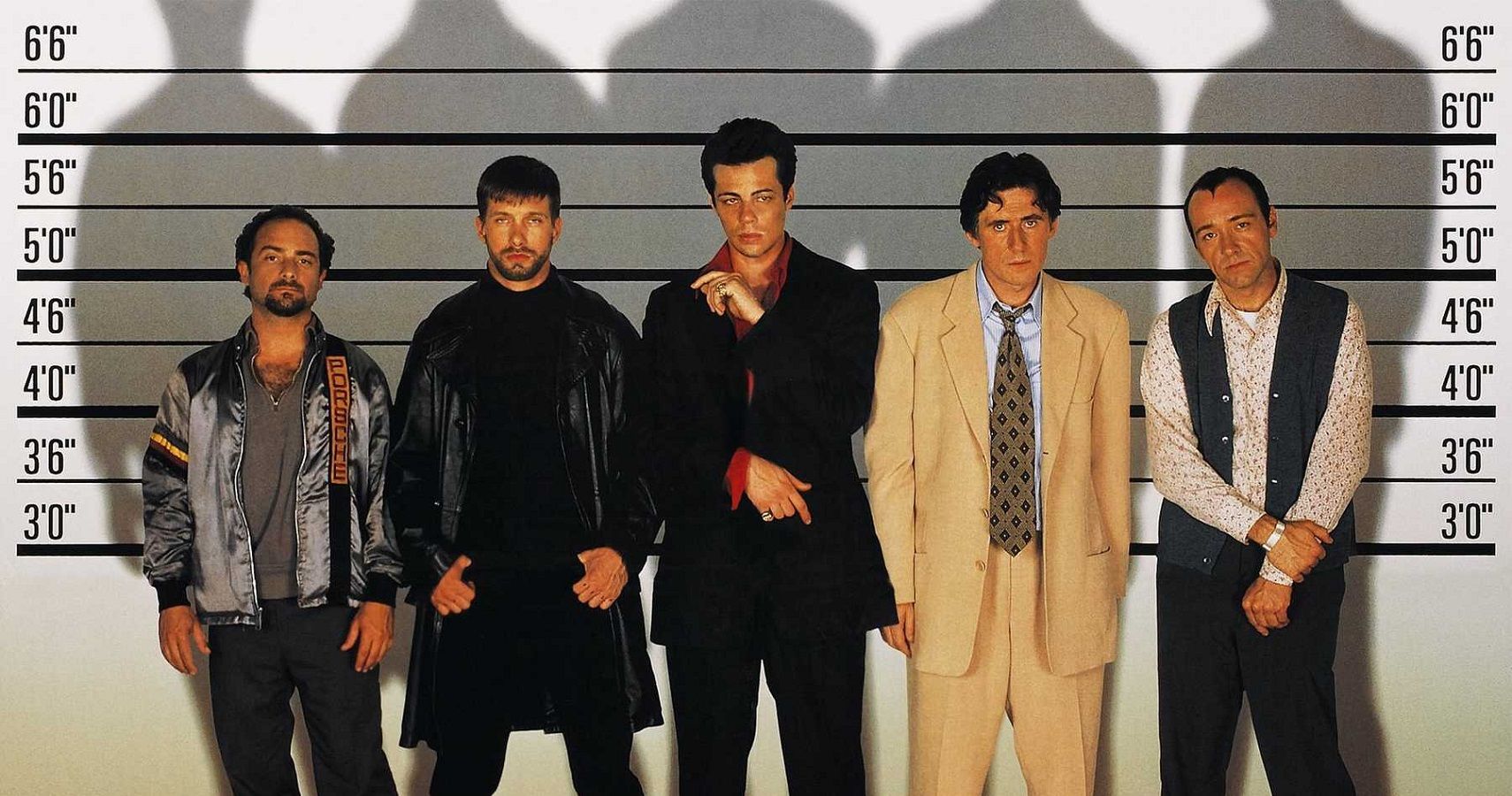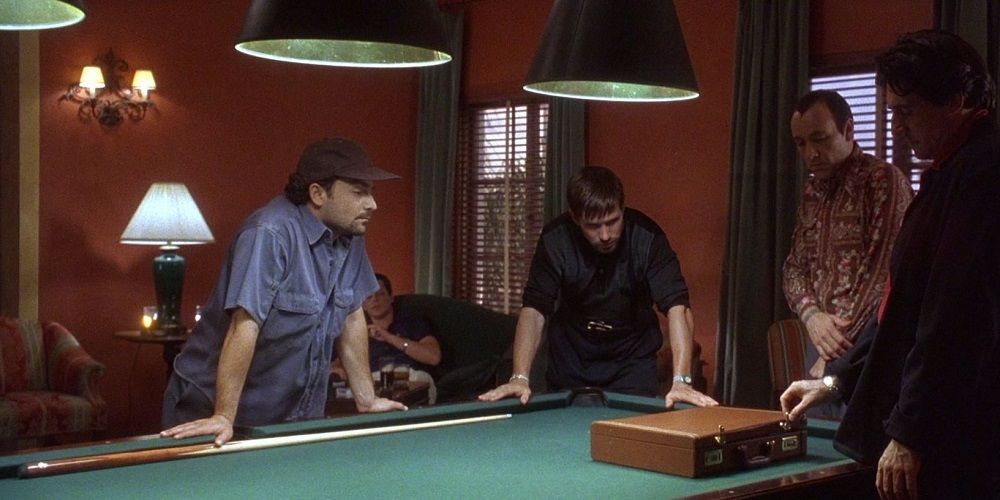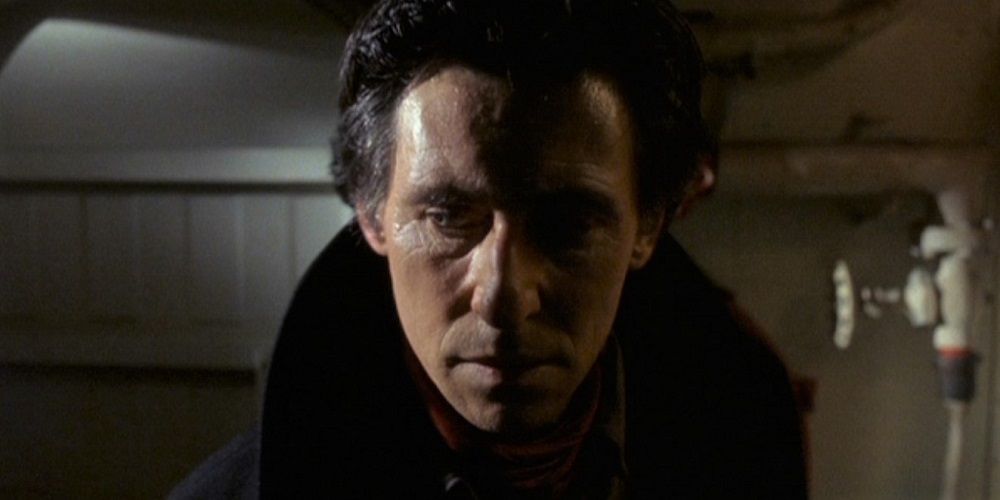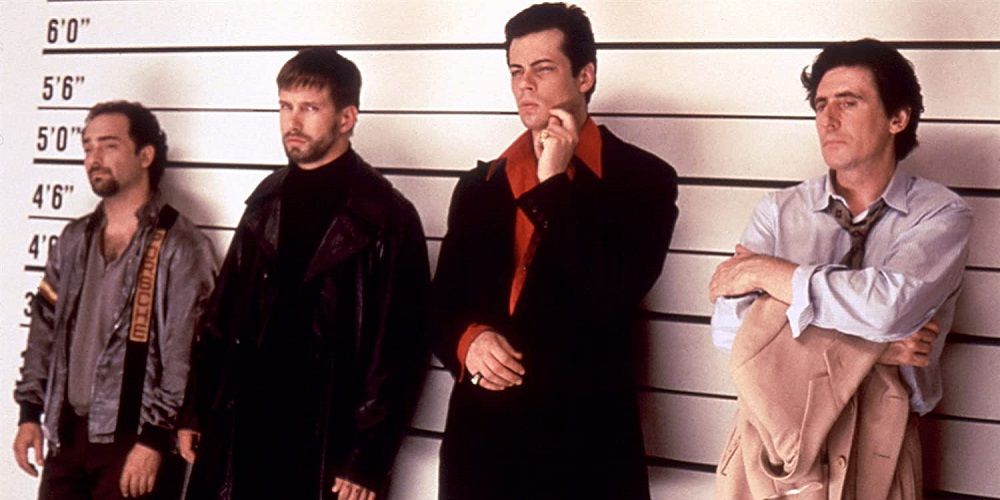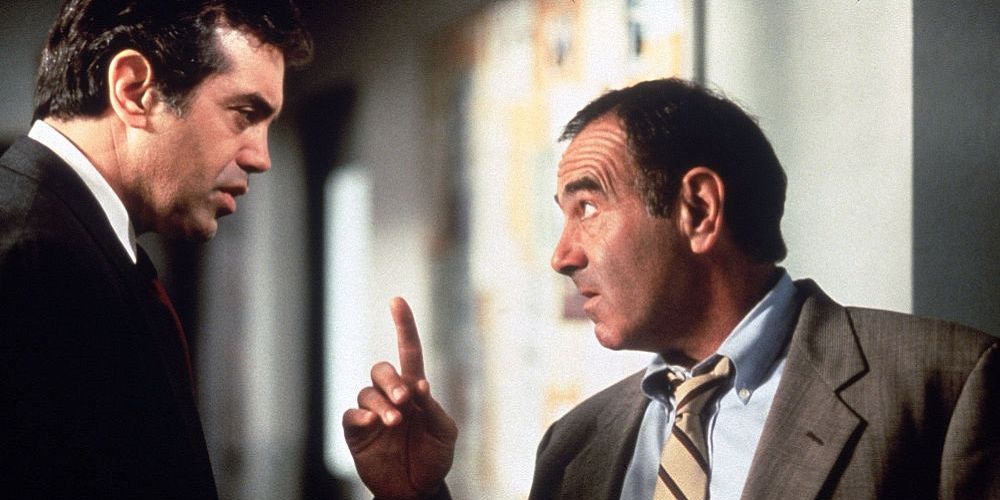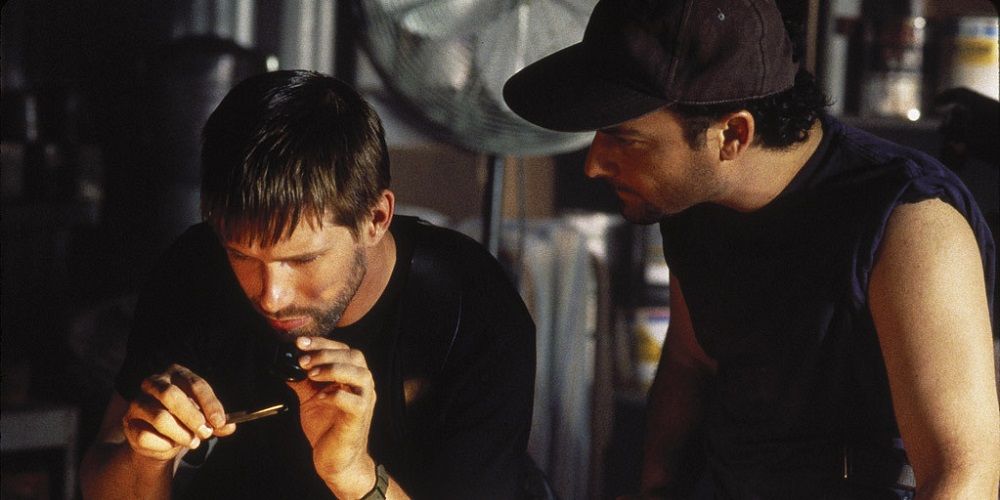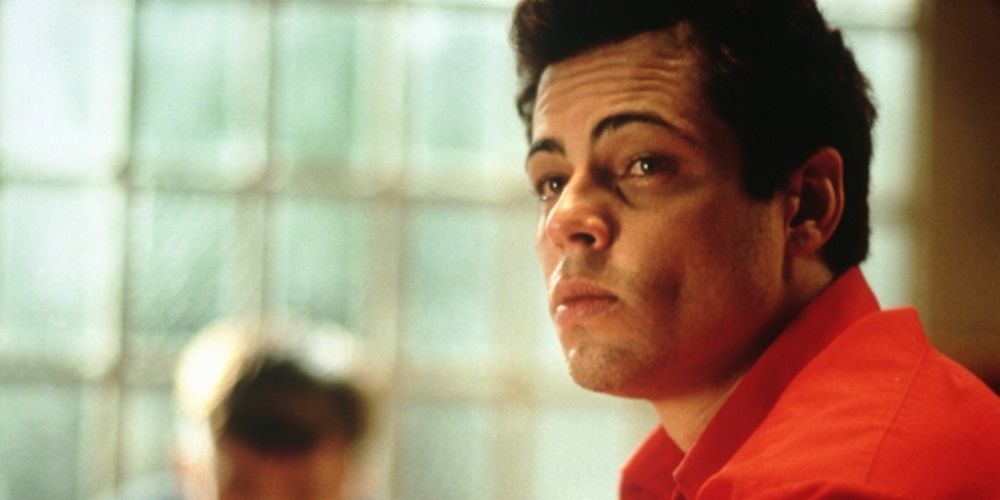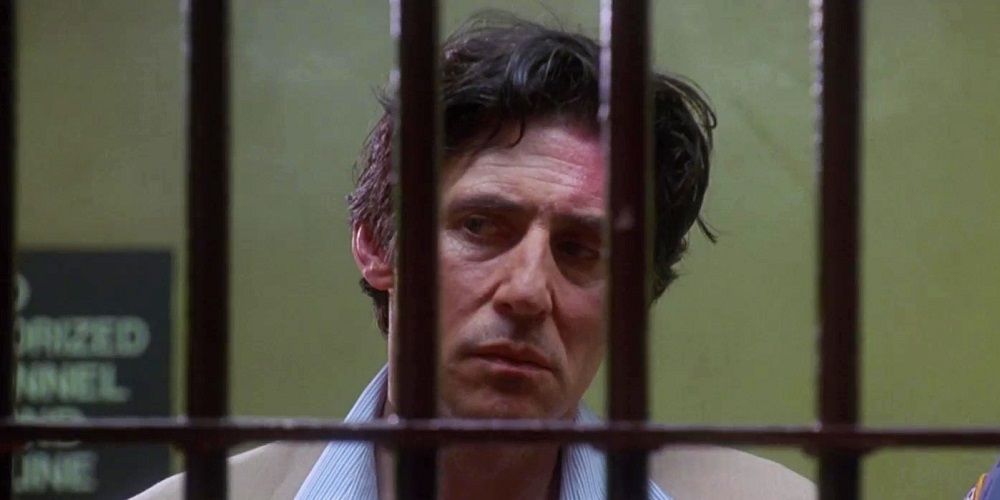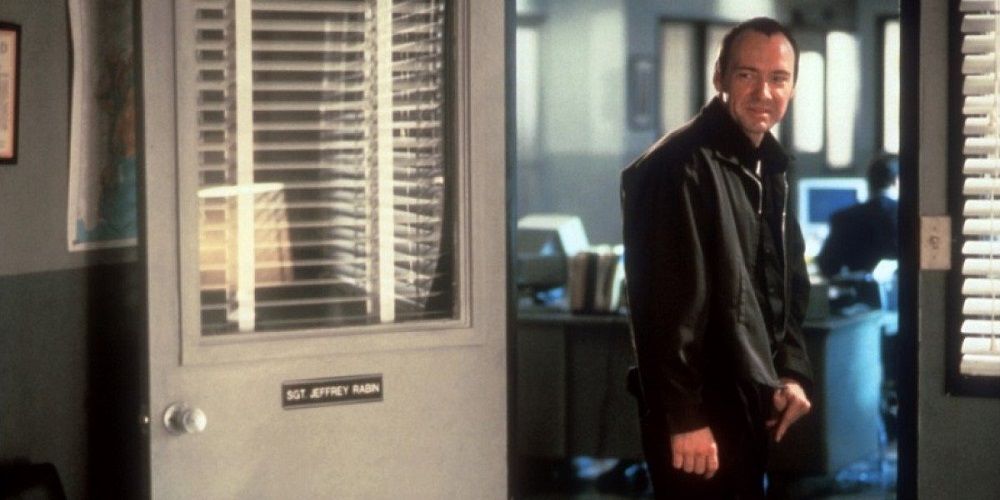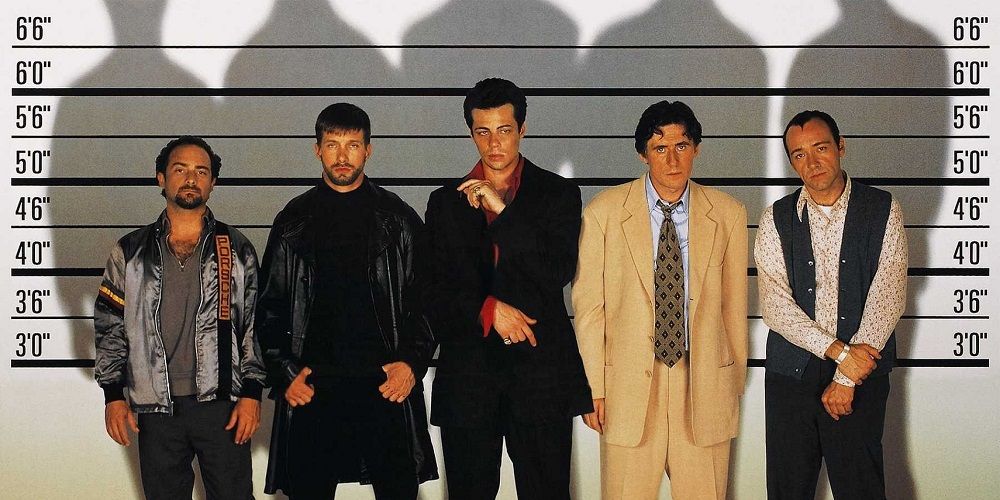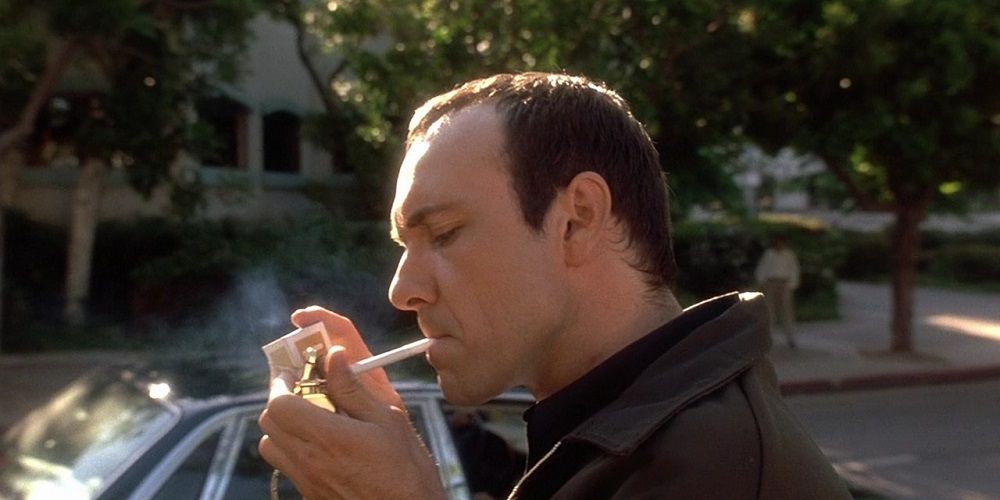The Usual Suspects is largely considered one of the best and most mysterious crime thrillers ever made. The story, about a quintet of hardened New York criminals who inadvertently cross Hungarian crimelord Keyser Soze while botching an L.A. drug deal, continues to shock audiences with its unpredictable twist-ending.
As such, The Usual Suspects currently boasts an 89% Rotten Tomato rating, 77/100 Metascore, and ranks #32 on IMDB's Top 250 with an 8.5/10 mark. The film also won two Oscars, including Best Original Screenplay and Supporting Actor. With the film set to celebrates its 25th anniversary this August, here are 10 behind-the-scenes facts about the making of The Usual Suspects.
Inspiration
While the title of the film is drawn from the line in Casablanca: "round up the usual suspects," screenwriter Christopher McQuarrie conceived the idea for the film by envisioning a movie poster with five men in a lineup.
Additionally, the central villainous character, Keyser Soze, was based on a real-life criminal named John List, who murdered his family before vanishing for 17 years. McQuarrie began working on the screenplay while at work at a law firm and detective agency, naming many of the characters in the film after his coworkers at the time.
Original Opening
In the original screenplay, the opening sequence was intended to be much longer. Dean Keaton (Gabriel Byrne) was supposed to plant a bomb on the ill-fated boat in California. The subplot was shot but unused in the final edit, although bits of it remain in the dialogue.
When Keaton asks Verbal "what time is it?" as the movie begins, it is in reference to the ticking timebomb that he planted on the ship. Due to the sudden changes in the screenplay, director Bryan Singer filmed all shots of the exploding boat in his own backyard.
Line-Up Scene
The iconic lineup sequence that establishes the rapport of the criminals to start the film was a happy accident on set. Bryan Singer initially intended the sequence to be extremely grave, but when the five actors began a fit of uncontrollable laughter during a full day of filming, he decided to use the funniest bits.
On the DVD commentary, actor Kevin Pollak admitted the reason the actors couldn't stop laughing is that Benicio Del Toro "farted like 12 takes in a row," but never confessed.
Agent Kujan
The role of Detective Dave Kujan was written specifically for Chazz Palminteri. When the actor was unavailable, the part was offered to Christopher Walken, Robert De Niro, Clark Gregg, and Al Pacino. Pacino showed interest in the role but ultimately declined due to playing a cop in Heat the same year.
When Palminteri suddenly became available, he had only one week to film all of his scenes. Clark Gregg also ended up being cast as Dr. Walters.
Pollak/Baldwin Beef
Actors Kevin Pollak and Stephen Baldwin did not get along well on the set of The Usual Suspects. While they're respective characters, Hockney and McManus, have a rocky relationship on screen, the tension extended behind the camera, as well.
During the "Making Of" documentary, Pollak insists that Baldwin would often stay in character in between takes, act tough, and often bully people as a result. Baldwin even admitted he bullied Pollak on the set to establish their character's onscreen tension.
Fenster/Benicio Del Toro
The role of Fenster was originally written for an older, veteran character actor, like Harry Dean Stanton. When Benicio Del Toro was cast, he altered the role entirely by making his thick accent nearly unintelligible.
In the DVD commentary, it is revealed that Del Toro deliberately made all of Fenster's dialogue nearly inaudible because his character's only function in the film was to die as a warning for the other characters. Therefore, Del Toro determined his dialogue was entirely irrelevant. The other actors were encouraged to improvise responses to Fenster's lines.
On Set Mystery
To maintain the air of mystery, Bryan Singer led all five main actors to believe they were playing the role of Keyser Soze while filming The Usual Suspects. Only Kevin Spacey knew from the outset that his character, Verbal Kint, was really Soze.
Upon screening the film for the first time, Gabriel Byrne was so shocked to learn that his character Dean Keaton was not Keyser Soze that he exited the theater in a fit of rage and began arguing with Singer in the parking lot for 30 minutes. When asked after the screening "who is Keyser Soze" Byrne quipped, "I thought I was."
Keyser Soze
Another way Singer maintained the mysterious nature of Soze's identity was to have five different actors portray him in the film.
Both Kevin Spacey and Gabriel Byrne's are shown in Soze's clothing, while a key grip was chosen for the Hungarian flashback scenes because of his distinctly powerful arms. In addition, composer John Ottman's hand is used for the close-up of Soze lighting a cigarette, and Bryan Singer's feet are used in the tight shot of Soze's shoes.
Baudelaire Quote
The most iconic quote in The Usual Suspects is the final line spoken by Keyser Soze: "the greatest trick the devil ever pulled was convincing the world he didn't exist." Much to the surprise of Bryan Singer and Christopher McQuarrie, the quote is directly pulled from French poet Charles Baudelaire. Neither the writer nor the director was aware at the time.
The same quote was used in the 1999 action film End of Days, which also stars Gabriel Byrne and Kevin Pollak.
Verbal/Visual Clues
Bryan Singer designed The Usual Suspects for viewers to find clues upon repeat viewings. Much of the mystery in the film revolves around Keyser Soze's identity, which Singer alludes to several times both verbally and visually.
The names Verbal Kint and Keyser Soze have the same amount of letters. Kevin Spacey and Keyser Soze share the same initials. Furthermore, Soze is described as being Hungarian in the film. "Sozel" is Hungarian for Verbal, while Keyser translates to emperor or king. Therefore, Keyser Soze loosely equates to King Verbal or Verbal Kint. Visually, Soze's hat and overcoat can be seen hanging in Agent Kujan's office at the beginning of the film. Soze's golden lighter is also among Kint's possessions upon his release from interrogation.

